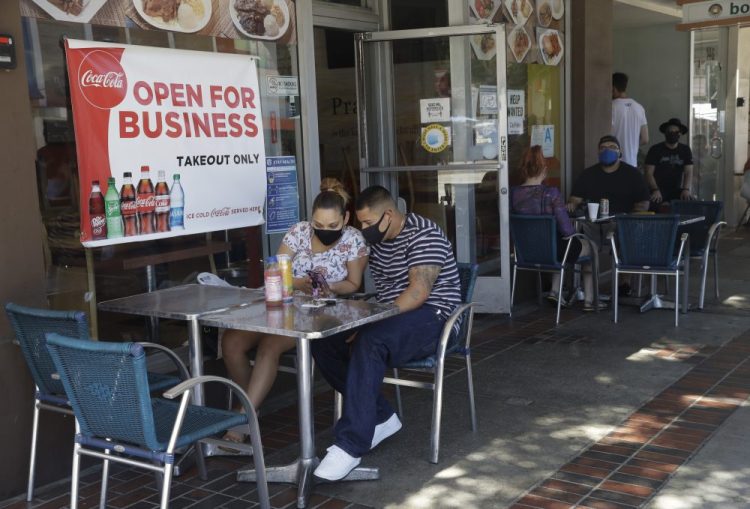Not even the greatest surge in joblessness in 80 years is easing the fast-food industry’s years-old labor shortage.
That’s because the COVID-19 pandemic is making this year’s economic crisis very different than past downturns, when restaurants offered an important lifeline for the newly unemployed. Since service-sector jobs now mean a higher chance of infection, even higher pay isn’t coaxing workers into the kitchen.
Key demographics – like teenagers, at the urging of their parents, and the elderly – are staying away for health and safety reasons, and emergency-enhanced unemployment checks have kept others on the sidelines. Restaurant chains are reporting they’re paying more, but that doesn’t mean they’re filling their staff openings.
“This is the most dramatic shift that’s happened in the modern history of food service” said Aaron Allen, chief strategist at restaurant consultancy Aaron Allen & Associates. “It’s the first time people have left the industry and decided not to come back.”
As of mid-July, only about half of the 6.1 million food-service jobs that the U.S. lost in March and April had returned, according to Bureau of Labor Statistics data. Early in the pandemic, restaurant chains pared menus, reduced store hours and cut staff.
While many traditional restaurants continue to struggle as consumers avoid dining rooms, fast-food chains and those with carryout have reported steady improvement this summer as socially distancing consumers opt for drive thrus. Delivery-focused companies like Papa John’s International Inc. and Domino’s Pizza Inc., meanwhile, have thrived.
To capitalize on the rebound, McDonald’s Corp. said in June that it planned to hire 260,000 this summer. Subway, Taco Bell, Dunkin’ Brands Group Inc., Papa John’s and Chipotle Mexican Grill Inc. are also looking to expand payrolls on a smaller scale. But the lack of workers is complicating efforts.
Michael Lippert, president of GPS Hospitality LLC, which operates almost 500 Burger King, Popeyes and Pizza Hut locations, said hiring has been particularly tough because fewer teenagers are applying. This has pushed up wages and led the company to expand overtime, previously reserved for management, to hourly workers. In August, the company held a virtual job fair, with a target of hiring 3,000 workers.
“The economic environment likely is not going to change. If it does, I don’t know that it will improve,” he said. “I think the labor force will remain tight for the next several months.”
Flynn Restaurant Group, which operates Taco Bell, Arby’s and Applebee’s locations, said it’s now paying hourly workers more than it did a year ago at its 280 Taco Bell restaurants.
While keeping restaurants fully staffed has always been difficult, “the uncertainty around COVID has made this even more of a challenge,” said Greg Flynn, the company’s founder and chief executive officer. He added the task remains daunting in spite of high jobless rates and economic contraction.
Wendy’s Co. is forecasting 4 percent wage inflation for the year. The higher wages are “what you need to pay at the moment on a year-over-year basis to actually staff your restaurants,” said Gunther Plosch, the company’s chief financial officer, on Wendy’s second-quarter earnings call on Aug. 5.
But higher pay isn’t enough for workers like Alonzo Rice in Orlando, Florida. A former Burger King cook and member of the Fight for $15 campaign to increase restaurant wages, Rice has been working odd jobs since his restaurant hours dwindled and then disappeared altogether amid the pandemic.
He’s now starting to apply for jobs again, but his old line of work just isn’t worth the risk, he said. “I’m not applying to any restaurant jobs.”
Send questions/comments to the editors.



Success. Please wait for the page to reload. If the page does not reload within 5 seconds, please refresh the page.
Enter your email and password to access comments.
Hi, to comment on stories you must . This profile is in addition to your subscription and website login.
Already have a commenting profile? .
Invalid username/password.
Please check your email to confirm and complete your registration.
Only subscribers are eligible to post comments. Please subscribe or login first for digital access. Here’s why.
Use the form below to reset your password. When you've submitted your account email, we will send an email with a reset code.